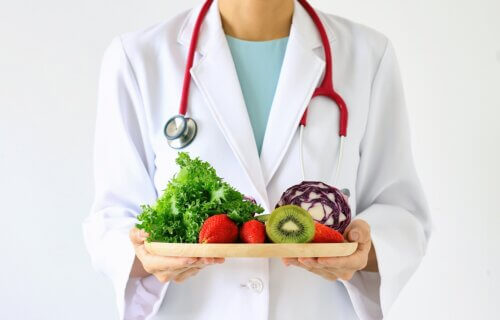CHICAGO — A commonly held misconception is that people don’t eat healthier simply because they don’t have the willpower. This mindset completely disregards socioeconomic factors. New research backs up how important it is to include them, showing that programs that provided free, home-delivered fruits and vegetables every week improved nutrition and overall health.
“We all know that eating healthier foods, like fruits and vegetables, is good for you, however, sometimes we focus too much on finding a simple solution rather than taking small, preventative measures to improve health,” says lead study author Lisa Goldman Rosas, Ph.D., M.P.H., an assistant professor in the department of epidemiology and population health and the department of medicine at Stanford School of Medicine in Palo Alto, California, in a media release. “’Food as Medicine’ programs, such as the Recipe4Health program we studied, aim to shift the focus to ensuring a healthy diet including fresh fruits and vegetables is consistently accessible and affordable to all people to help improve health outcomes.”
Recipe4Health is a California-based program that provides free, weekly deliveries of produce from local farms to adults who receive care from one local Federally Qualified Health Center. Over the 16 weeks, participants received around 16 servings of fresh fruits and vegetables. The research team surveyed participants about their diet, physical activity, and level of food insecurity before and after the program. To assess food insecurity, a series of questions were asked so that the researchers could get a better idea of how often they run out of food or don’t have the funds to buy more.
Upon analysis of the survey findings after 16 weeks, the participants were found to have:
- Increased fruit and vegetable consumption by nearly one-half of a serving per day.
- Increased physical activity by close to 42 minutes per week.
- Experienced less food insecurity (displaying a fall from 59% to 48% after the program was over).
“I was really excited to see that providing patients with a modest amount of locally grown produce resulted in improvements in food insecurity, diet and indicators of cardiovascular health. This study took place during the COVID-19 pandemic, when many of these outcomes were worsening, especially among patients receiving care at Federally Qualified Health Centers that were disproportionately impacted,” says Rosas.

In another analysis, researchers examined changes in cardiovascular disease risk factors one year after the program started. When comparing Recipe4Health participants with adults receiving care at other Federally Qualified Health Centers in the same county that did not receive deliveries, the team found that participants in the free program had:
- Significantly greater reductions in non-HDL cholesterol (total cholesterol minus high-density lipoprotein cholesterol or “good” cholesterol).
- Average HbA1c levels of 0.37%, which is a lower reduction than what could possibly be seen with a Type 2 diabetes medication in the same timeframe.
- No notable changes in blood pressure or body mass index.
“It is possible that additional strategies are needed to change body mass index and blood pressure. Additional strategies may include behavioral interventions and pharmacotherapy in conjunction with a Food as Medicine program,” explains Rosas.
While these findings are interesting, the study itself does have limitations. Since this was completed during the pandemic, only a small number of participants had their blood drawn at the lab. Also, findings regarding diet and physical activity were from surveys completed by Recipe4Health participants, but the same information wasn’t gathered from a control group.
Regardless, there is a known need to improve access to healthy food. The American Heart Association’s Health Care by FoodTM initiative is investing in research, advocacy, and education to demonstrate the clinical benefit and cost-effectiveness of interventions that use food as a tool against chronic illness.
“This research demonstrates the potential for a food prescription, accessible through a health care visit, to improve health outcomes for significant portions of the U.S. population,” says Kevin Volpp, M.D., Ph.D., the Mark V. Pauly Professor at the Perelman School of Medicine and the Wharton School, director of the Penn Center for Health Incentives and Behavioral Economics and research lead for the Association’s Health Care by FoodTM initiative. “A coordinated research approach is needed to more systematically and rigorously define how well food is medicine interventions prevent and treat disease compared to standard medical care.”
A Dietitian’s Take
Food is medically relevant. There are no doubts about it. People who struggle with food-related chronic illness the most are people who don’t have enough money, resources, and/or education to make healthier food choices. This work is just one example of that from one part of the United States.
Current estimates suggest that around 44 million Americans experience food insecurity every year. For many in this population, there is a desire to eat healthier, but the means just aren’t there. It makes sense that a program providing free fruits and veggies would promote increased consumption of them and, therefore positively influence other health markers. Hopefully, more researchers and legislators continue to put more time and effort into advocating for these populations because food is often directly linked to their overall healthcare and can greatly influence outcomes.
